Location of Langtang Ganja La Pass Trek
The Langtang Ganja La Pass Trek is located in the Langtang region of Nepal, north of Kathmandu. This trekking route connects the Langtang Valley Trek with the Helambu Village Trek by crossing the Ganja La Pass (5,130 m).
The trek begins in Kathmandu, leading through the classic Langtang Valley to Kyanjin Gompa. From there, it continues southward to Ganja La Pass before descending into the Helambu region, ending at Tarkegyang or Melamchi.
This trek passes through Langtang National Park, known for its glaciers, high-altitude lakes, and rich Tamang and Sherpa culture. Ganja La Pass is a challenging crossing with steep ascents, icy slopes, and technical sections that may require ropes and crampons. After the pass, the trail descends into the Helambu region, offering diverse landscapes and unique Sherpa culture.
Best Time for Langtang Ganja La Pass Trek
The best seasons for the Langtang Ganja La Pass Trek are spring (March–May) and autumn (September–November). These seasons offer the most stable weather, clear skies, and safe trekking conditions for crossing the high-altitude Ganja La Pass (5,200 m).
However, the ideal months for this trek are April, May, September, and October. During March and November, the pass can be more challenging due to narrow trails and possible snowfall in the mountains.
- Spring Season (March–May)
Best for scenic beauty and mild weather, as daytime temperatures range from 10°C to 20°C in lower areas, while nighttime temperatures drop to -10°C to -5°C at Ganja La Pass.
In spring, the weather remains stable with low chances of snowfall, providing clear mountain views and making it easier to find the right trail. The longer daylight hours allow trekkers to reach camp on time and set up tented camps comfortably.
Additionally, spring brings rhododendron forests in full bloom, with vibrant red, pink, and white flowers decorating the trekking route, enhancing the natural beauty of the trek.
- Autumn Season (September–November)
This season is also best for clear skies and ideal trekking conditions, with daytime temperatures ranging from 10°C to 18°C and nighttime temperatures dropping to -10°C to -5°C at high altitudes, including Ganja La Pass.
Autumn offers the most stable weather, with minimal risk of snowfall or rain, ensuring crystal-clear mountain views, making it the best time for photography. The longer daylight hours make trekking easier, allowing trekkers to reach camp on time and set up tented camps comfortably.
Additionally, autumn brings a festive atmosphere in Nepal with Dashain and Tihar festivals, adding a cultural experience to the trek. With ideal conditions for high-pass crossings, autumn is considered the peak trekking season in Nepal.
- Monsoon/Summer (June–August) and winter (December–February)
Summer and winter seasons are not recommended due to heavy rain and landslides in summer, and extreme cold with snow-covered trails in winter. Additionally, the route from Kyanjin Gompa to Tarkeghyang is risky due to the lack of teahouse accommodations.
Langtang Ganja La Pass Trek Difficulty
The Langtang Ganja La Pass Trek is one of the most challenging and difficult treks in the Langtang region due to its high altitude (5,200m), technical sections, remote terrain, unpredictable weather, and lack of teahouse accommodations between Kyanjin Gompa and Tarkyaghyang, requiring camping for at least 3-4 days, with steep ascents and descents, glaciers, rocky and icy trails that demand basic climbing skills (including the use of crampons, ropes, and ice axes), while major challenges include high altitude sickness (AMS), extreme weather conditions, and heavy snow or ice on the pass, making proper preparation, fitness, technical skills, professional guidance, strong porters to carry camping equipment, essential mountaineering gear, a well-planned acclimatization stop at Kyanjin Gompa, trekking in the right season (spring or autumn), and having a backup plan with emergency contacts (such as helicopter evacuation) crucial for successfully completing this adventure on time.
Who Can Do This Ganja La Pass Trek?
The Langtang Ganja La Pass Trek is a challenging trekking route in the Langtang region and is not suitable for everyone, as it is best suited for experienced trekkers who have previously completed high-altitude treks (above 4,500m), physically fit hikers capable of walking 6-8 hours a day on steep ascents and descents, and individuals with basic climbing skills, including the use of crampons, ice axes, and rope handling, while it is not recommended for beginners due to its technical difficulty and high-altitude risks; however, with proper preparation—such as physical fitness training, acclimatization, mental readiness, hiring an experienced trekking guide, and using the right trekking and camping gear—determined beginners can also successfully complete the Langtang Ganja La Pass Trek
Require permits for Langtang Ganja La Pass Trek
The Langtang Ganja La Pass Trek lies within Langtang National Park, requiring trekkers to obtain a National Park Entrance Permit and a TIMS (Trekker’s Information Management System) card for safety tracking; however, no special permit is needed, unlike restricted areas such as Upper Mustang, Upper Dolpo, the Manaslu Region, and Nar-Phu Valley, though the government has mandated these two permits specifically for trekking in the Langtang region, which must be presented at checkpoints along the Langtang Valley trekking route, and failure to obtain them in advance may result in additional charges (penalty) or legal consequences under Nepalese law, including being required to turn back, while these permits can be obtained through a registered trekking company or the Tourism Board (Bhrikuti Mandap), with the National Park Entrance Permit also available for purchase in Dhunche..
The required permits and their respective costs per person (per trek) are as follows:
- TIMS (Trekker’s Information Management System): US$ 20 for all trekkers
- Langtang National Park Entry Permit: US$ 30 for all foreign nationalities and US$ 15 for SAARC nationals.
Langtang Ganja La Pass Trek Cost
The cost of the Langtang Ganja La Pass Trek can vary depending on several factors, such as the trek duration, guide and porter hire, accommodation preferences, and the level of service selected. Our package costs between USD 950 and USD 1,500 per person for groups of 2 or more, with a 14-day itinerary that includes everything from arrival to departure, transportation, 3 nights in a hotel in Kathmandu, Kathmandu Valley sightseeing, and all logistical services, including teahouse and tent camp accommodations during the trek. Opting for the full package for the Langtang Ganja La Pass Trek is ideal for trekkers, as it offers a hassle-free experience, allowing trekkers to focus solely on the trek, ensuring a more enjoyable experience.
Accommodation in Langtang Ganja La Pass Trek
The Langtang Region is the third most popular trekking destination in Nepal, with the Langtang Valley Trek and Helambu Village Trek being well-established routes near Kathmandu; the Langtang Ganja La Pass Trek connects these routes. The trekking trails in Langtang Valley and Helambu Village are well-managed by Langtang National Park and the local community. However, between Kyanjin Gompa and Tarkhyang, there are no teahouse accommodations, so camping is required. In the camping areas, high-quality tents with mattresses and sleeping bags are provided to ensure warmth.
There are numerous accommodations and restaurants along the trekking trail up to Kyanjin Gompa, and after Tarkhyang, new houses are built every year to accommodate the increasing number of trekkers. Therefore, you can easily find comfortable accommodations in these areas, with most teahouses (lodges) striving to provide excellent service. Typically, lodges offer private rooms with two beds and shared indoor bathrooms, and the warm dining room serves as the eating area. However, between these areas, trekkers need to carry camping equipment, as there are no teahouses.
Food in Langtang Ganja La Pass Trek
Each lodge along the Langtang Ganja La Pass Trek offers a food menu, with most items being similar across different teahouses. We strongly recommend trying the typical Nepali dish "Dal-Bhat" (boiled rice, vegetables, and lentil soup), though you can also choose other items from the menu. Many lodges grow fresh vegetables in their gardens and serve them to customers. While the cooks are trained, the taste of the food may differ slightly from Western cuisine. Fresh meat is not readily available in the mountains, so it's advisable to opt for vegetarian options during the trek. Between Kyanjin Gompa and Tarkhyang, there are no teahouses, so all food must be brought along, and our trekking staff will serve meals like pasta, porridge, rice, and potatoes, which will provide enough nutrition.
As for drinks, you can purchase a variety of beverages at each lodge, but prices tend to increase as you ascend. You can drink regular water by using purification tablets, though it's recommended to avoid alcoholic drinks as you reach higher altitudes.
Tipping information
The trekking guides and the porters, play a crucial role in ensuring a smooth and successful trip. After completing the journey, they gratefully accept tips from trekkers. Tipping is an important aspect of trekking in Nepal, as it acknowledges and appreciates the hard work of the Guide and Porter that supports you throughout your adventure- Langtang Ganja La Pass Trek. It is customary to tip at the end of the trek, and you should gather all team members— including the guide, porter, and assistant guide— to distribute the tips fairly.
Tips are generally given in cash, preferably in US dollars or Nepalese rupees. It is best to use small denominations to facilitate easier distribution. While the typical guideline is to tip around 15 to 20% of the total payable amount, you can adjust this based on the quality of service provided.
Recommended tipping amounts are as follows:
- Guide: $12-$15 per day
- Porter: $8-$10 per day
These tips are highly recommended to motivate the team and reward them for their outstanding service, contributing to a memorable and inspiring experience.
Trekking Gear List
Travel equipment is essential to pack before your trip. While it may seem overwhelming to carry everything from home to another country, some necessary equipment can be hired or purchased in Kathmandu, particularly around the Thamel area. These general items are suitable for all seasons while trekking in Nepal, but the required equipment may vary depending on the season and the duration of your chosen trekking route.
Documents:
- Passport and 4 passport size photos
- Travel insurance details (in case an emergency evacuation if needed)
- Boarding passes for flights
- Driver’s license (if needed)
- Cash USD
- Credit/Debit Card (Ensure you have $500 on your card incase an emergency helicopter evacuation is needed)
Sleeping:
- Sleeping bag (Comfort rating -15 Celsius recommended)
- Sleeping bag liner (Optional)
Footwear:
- Trekking boots: one pair lightweight
- Sandals for city and tea house footwear
- Shoes for the plane and tea houses (Optional)
- Gaiters for hiking in winter to the base camp
- Thin, lightweight inner socks
- Thick, warm wool hiking socks
Clothing for Body:
Please make sure that you have non-cotton clothing for trekking:
- Base-layer t-shirts (e.g. running t-shirts)
- Fleece/Windproof jacket
- Waterproof jacket
- Down jacket for warmth
- Travel clothes and City Wear
- Underwear
- Base-layer trousers (optional)
- Waterproof trousers
- Trekking trousers
- Trekking shorts (Optional)
- Gloves and wool hat
- bandanna or scarf
Health Requirements (Basic First Aid Kit)
- First-aid kit; should contain lip salve, Aspirin, Band Aids, anti-histamine, Imodium or similar tablets for mild cases of diarrhea
- Re-hydration powder, extra prescription drugs you may be taking if any particular
- Wet wipes for cleaning can be purchased in Kathmandu
Others:
- Sunglasses and Sun cream
- Towel
- Book (reading and writing materials)
- MP-3 /Music, headphones and ear plug (who know some people on group are snoring) as optional.
- Travel wash
- Hand sanitizer, wet wipes
- A day bag: 35 liters
- A duffel or rucksack with straps to go over your back (Max 12 kg of weight for porters to carry)
- Dry Liner or Dry Bag
- Water bottle/thermos/ camel bag: At least 2 L. Nalgen bottles best.
General Toiletries
- Toilet papers/ tissue
- Contact lenses, Glasses (if needed)
- 1 medium sized quick drying towel
- Tooth brush/paste (preferably biodegradable)
- Multipurpose soaps (preferably biodegradable)
- Large plastic bags – for keeping items dry inside your kit / duffel bag
- Travel game i.e. chess, backgammon, and scrabble. (for luxuries)
- Binoculars (for luxuries)
- Trail Map/Guide book (if you are alone)


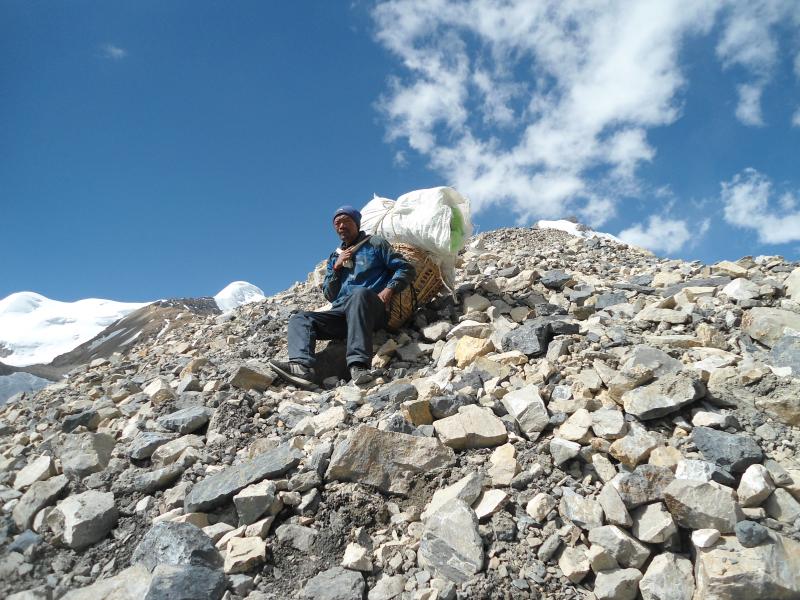
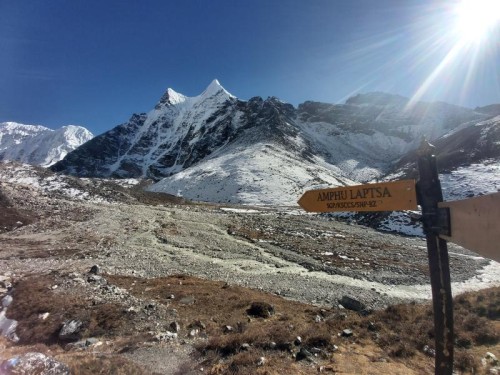


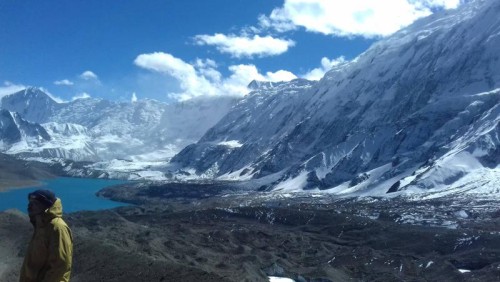

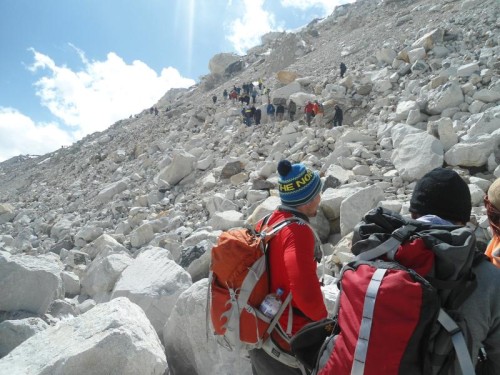
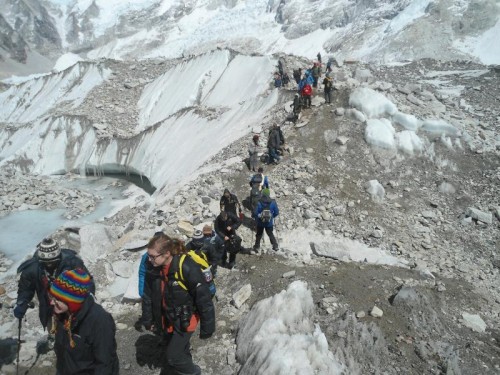

Costina Marghescu
Chile
Ganjala Pass Trek via Langtang Valley
14th June, 2023
Me and my girl friends did the Ganjala Pass Trek with Purna who is also owner of the High Pass Adventure. The pass is challenging for us but we feel easy because Purna was professional to lead the trek and he helped us every step along the pass as well as he handled all the necessary safety measures.
He answering very quick about trek and always ask about our physical health so without this person we may not have completed the trip. Many many thanks to all high Pass Adventure team and I would highly recommend them and I always use them for any other trek in Nepal.